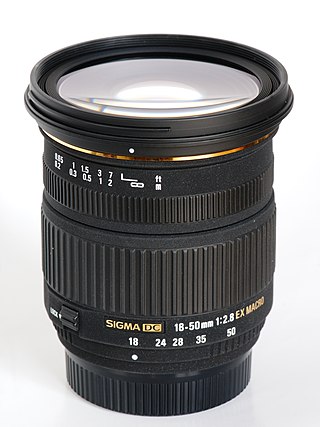
Konica Minolta, Inc. is a Japanese multinational technology company headquartered in Marunouchi, Chiyoda, Tokyo, with offices in 49 countries worldwide. The company manufactures business and industrial imaging products, including copiers, laser printers, multi-functional peripherals (MFPs) and digital print systems for the production printing market. Konica Minolta's Managed Print Service (MPS) is called Optimised Print Services. The company also makes optical devices, including lenses and LCD film; medical and graphic imaging products, such as X-ray image processing systems, colour proofing systems, and X-ray film; photometers, 3-D digitizers, and other sensing products; and textile printers. It once had camera and photo operations inherited from Konica and Minolta but they were sold in 2006 to Sony, with Sony's Alpha series being the successor SLR division brand.

Minolta Co., Ltd. was a Japanese manufacturer of cameras, camera accessories, photocopiers, fax machines, and laser printers. Minolta Co., Ltd., which is also known simply as Minolta, was founded in Osaka, Japan, in 1928 as Nichi-Doku Shashinki Shōten. It made the first integrated autofocus 35 mm SLR camera system. In 1931, the company adopted its final name, an acronym for "Mechanism, Instruments, Optics, and Lenses by Tashima".

The Minolta MAXXUM 7000 35 mm SLR camera was introduced in February 1985. It was the first camera to feature both integrated autofocus (AF) and motorised film advance, the standard configuration for later amateur and professional single lens reflex cameras.

Macro photography is extreme close-up photography, usually of very small subjects and living organisms like insects, in which the size of the subject in the photograph is greater than life-size . By the original definition, a macro photograph is one in which the size of the subject on the negative or image sensor is life-size or greater. In some senses, however, it refers to a finished photograph of a subject that is greater than life-size.

Sigma Corporation is a Japanese company, manufacturing cameras, lenses, flashes and other photographic accessories. All Sigma products are produced in the company's own Aizu factory in Bandai, Fukushima, Japan. Although Sigma produces several camera models, the company is best known for producing high-quality lenses and other accessories that are compatible with the cameras produced by other companies.

Sony α is a brand of digital camera. This line has been active since 2006, building upon the Konica Minolta camera technologies, whose assets were acquired by Sony.

The Maxxum 7D, labelled Dynax 7D in Europe/Hong Kong and α-7 Digital in Japan and officially named "DG-7D", is a 6.1 megapixel digital single-lens reflex camera, or DSLR, produced by Konica Minolta. It was the top model of their DSLR range; the Maxxum/Dynax 5D consumer-grade model was the other.
The Canon EF 100 mm lenses are used for Canon DSLR cameras. There are four different types of EF 100 mm lens for Canon. Certain lenses are best for macro photos, whereas other lenses are good for taking pictures of subjects from a distance.

The Minolta AF Zoom 70–210mm f/4 lens is an autofocusing telephoto photographic lens compatible with cameras using the Minolta AF lens mount.

Originally produced by Minolta, and currently produced by Sony, the AF 75-300mm F4.5-5.6, is a telephoto zoom photographic lens compatible with cameras using the Minolta AF and Sony α lens mounts.

Originally produced by Minolta, and currently produced by Sony, the STF 135mm f/2.8 [T4.5] is a photographic lens compatible with cameras using the Minolta AF and Sony α A-mount. STF stands for Smooth Trans Focus, in reference to its special optical system, which is intended to smooth the transition between the plane of focus and out-of-focus areas in the image. This is accomplished by the use of an apodization filter that provides the high-quality bokeh effect. The lens is not a soft-focus lens.

The Minolta A-mount camera system was a line of photographic equipment from Minolta introduced in 1985 with the world's first integrated autofocus system in the camera body with interchangeable lenses. The system used a lens mount called A-mount, with a flange focal distance 44.50 mm, one millimeter longer, 43.5 mm, than the previous SR mount from 1958. The new mount was wider, 49.7 mm vs. 44.97 mm, than the older SR-mount and due to the longer flange focal distance, old manual lenses were incompatible with the new system. Minolta bought the autofocus technology of Leica Correfot camera which was partly used on the a-mount autofocus technology. The mount is now used by Sony, who bought the SLR camera division from Konica Minolta, Konica and Minolta having merged a few years before.
Originally produced by Minolta starting in 1985, then produced by Sony from 2006 until 2022, the AF Apo Tele 300mm f/2.8 is a professional telephoto prime photographic lens compatible with cameras using the Minolta A-mount and Sony A-mount lens mounts. The name indicates it has an apochromatic design and is part of the G series, Minolta's designation for high-performance lenses. Later versions included "High Speed" gearing; starting in 2003, the lens was recomputed with a new optical design and equipped with a focusing distance encoder for the Advance Distance Integration (ADI) flash system.

Originally produced by Minolta, and later produced by Sony, the AF Macro 50mm f/2.8 is a macro prime photographic lens compatible with cameras using the Minolta A-mount and Sony A-mount lens mounts.

This article details lensesfor single-lens reflex and digital single-lens reflex cameras. The emphasis is on modern lenses for 35 mm film SLRs and for "full-frame" DSLRs with sensor sizes less than or equal to 35 mm.

The Minolta AF 50mm f/1.7 is a discontinued lens with autofocus that was produced by Minolta for A-mount single lens reflex cameras from 1985 through 2006. It is still in use today by users of digital and film SLRs from Minolta and Sony. The relatively large maximum aperture allows the photographer to take shots indoors even when operating at ISO 100 - 200.

The Sigma 18-50mm f/2.8 EX DC Macro is a wide to normal angle, zoom lens made by the Sigma Corporation.

Rokkor was a brand name used for all Chiyoda Kōgaku Seikō and later Minolta lenses between 1940 and 1980, including a few, which were marketed and sold by other companies like Leica. The name was derived from the name of Rokkō (六甲山), a 932 metre (3058') high mountain, which could be seen from the company's glass-making and optics factory at Mukogawa near Osaka, Japan. The company's founder Kazuo Tashima wanted the name to symbolize the high quality in optics.

















